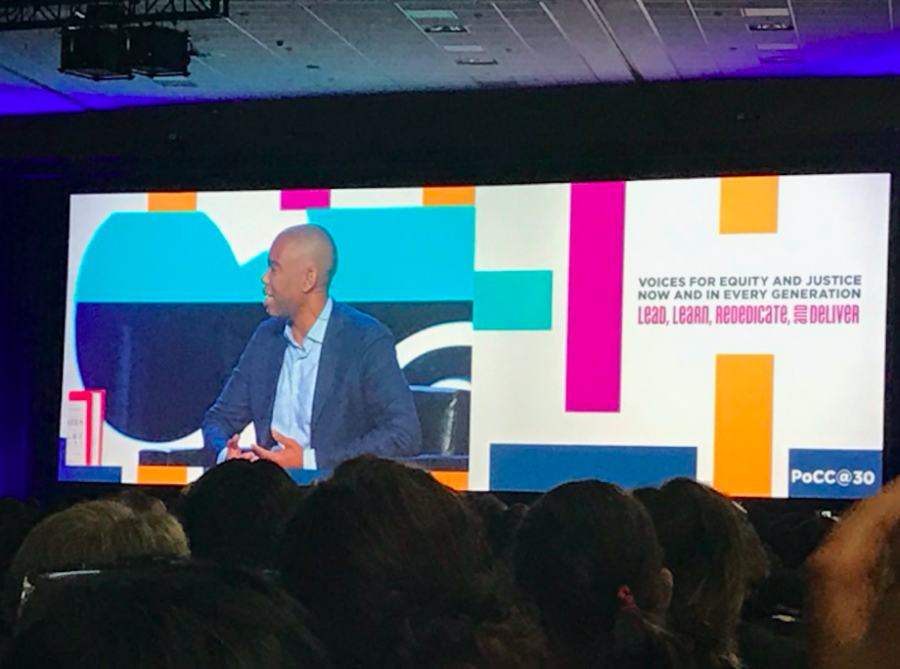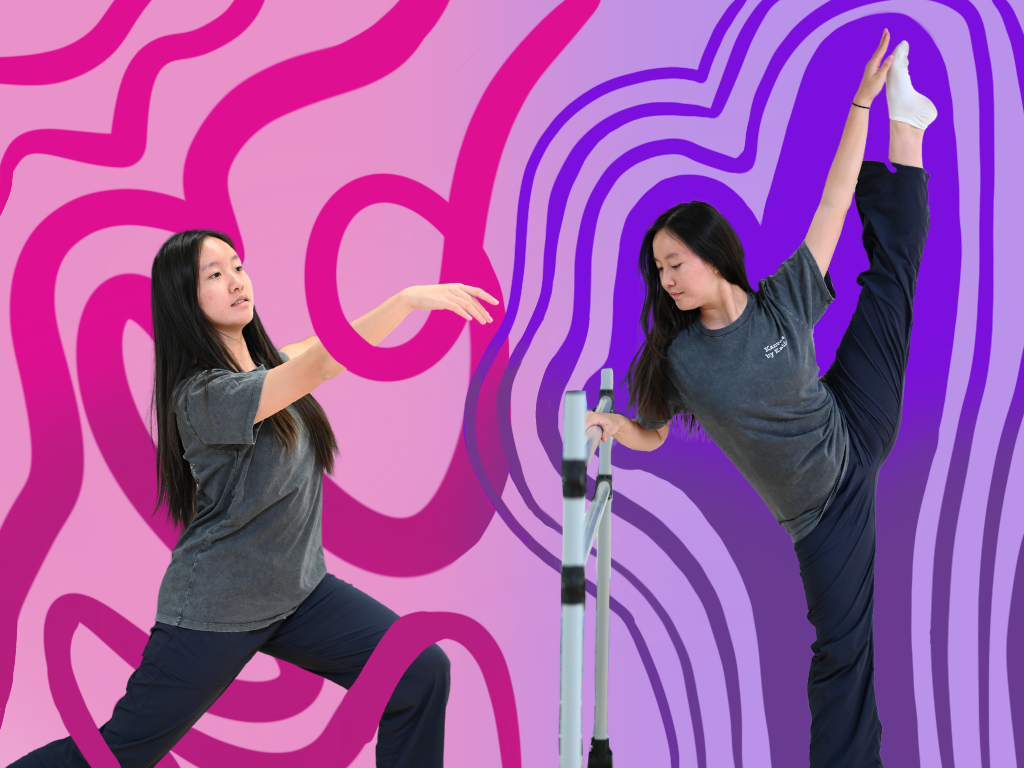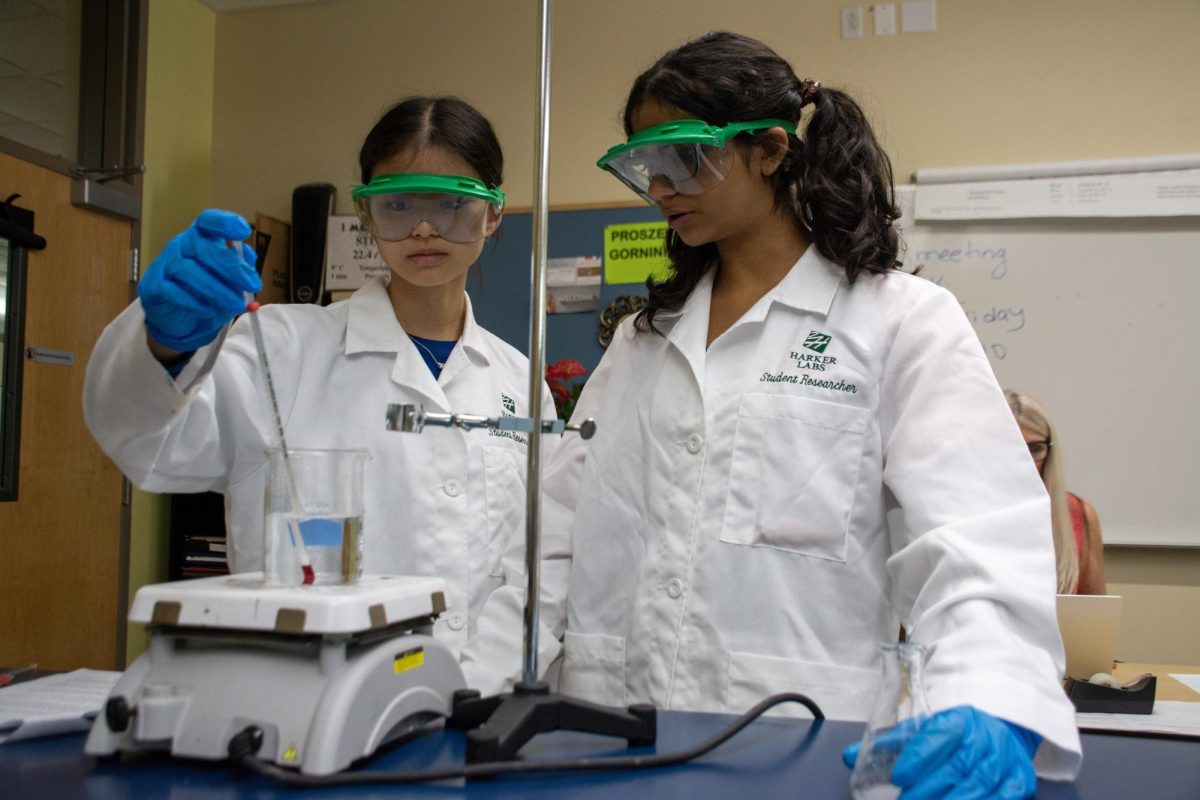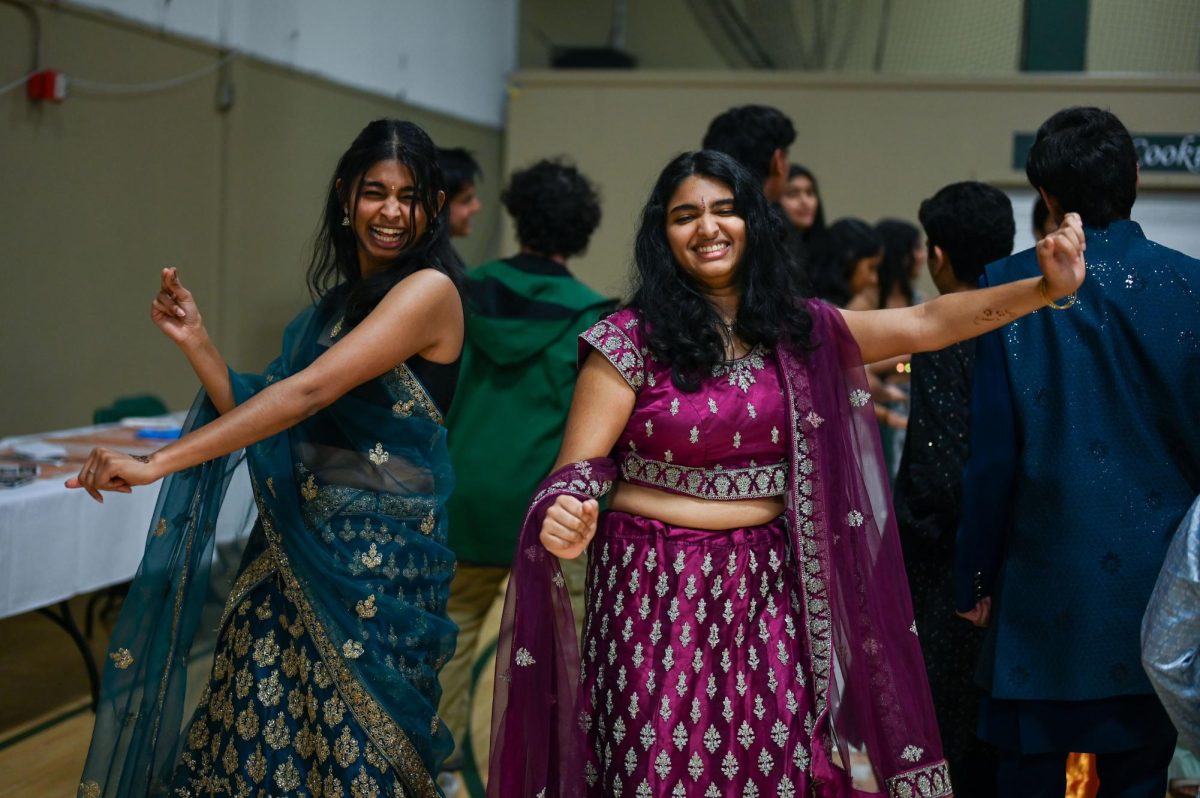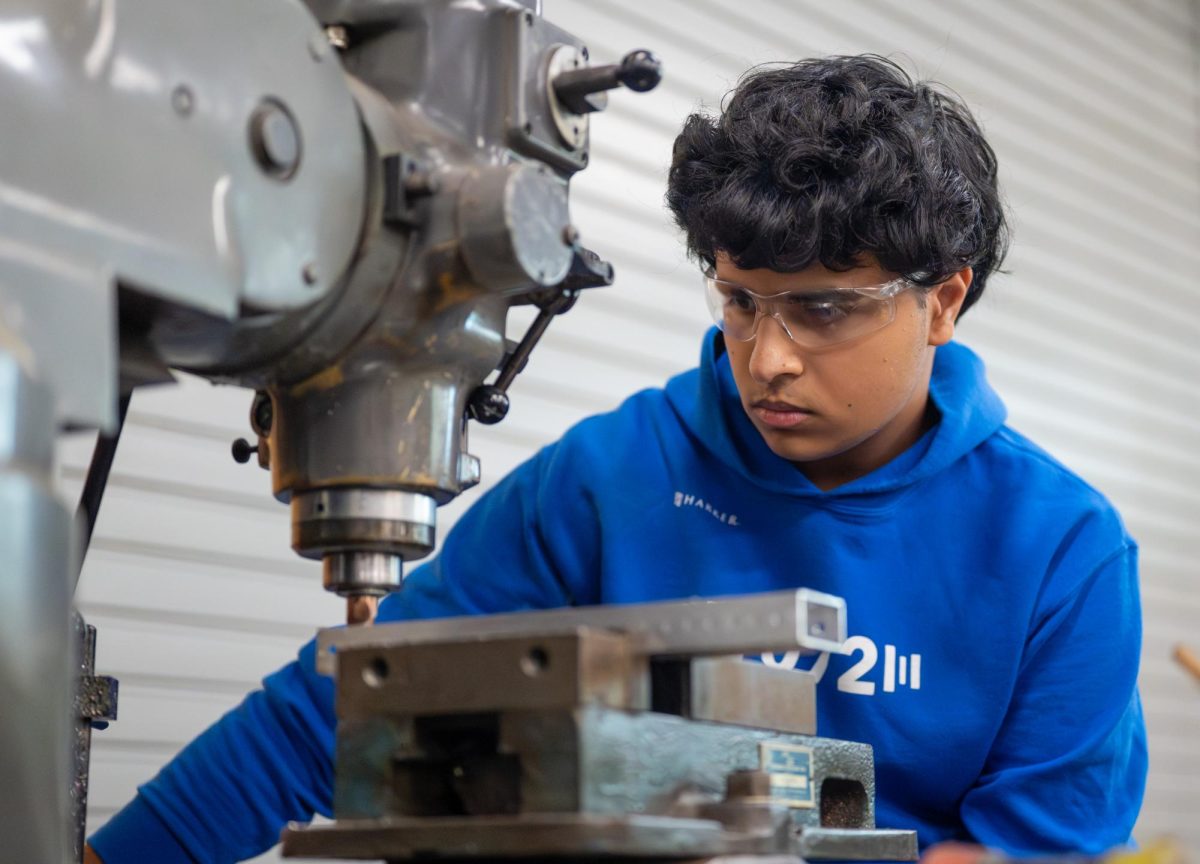Upper school students attend diversity, social justice and equity issues conference in Anaheim
Author and MacArthur Genius Grant Fellowship recipient Ta-Nehisi Coates discusses his work as well as the history of oppression during the SDLC’s closing ceremony. The event took place in Anaheim from Nov. 29 to Dec. 2.
December 4, 2017
Six students from the upper school attended the National Association of Independent Schools (NAIS) Student Diversity Leadership Conference (SDLC) in Anaheim, California from Nov. 28 to Dec. 2.
The conference centered around the theme “Voices for Equity and Justice Now and in Every Generation” and took place alongside the NAIS People of Color Conference (PoCC).
“We try to promote the [SDLC’s] commitment to the work of social justice and equity issues in our schools,” Diversity Committee faculty member, trip chaperone and PoCC attendee Pilar Agüero-Esparza said. “[That] really required bringing students who are interested to the SDLC. This is an opportunity for the students to meet other students who are interested in that work and to be able to participate in dialogue, because these are difficult conversations.”
The conference takes place annually in the fall. According to the NAIS website, the SDLC is a “multiracial, multicultural gathering of student leaders from across the U.S.” It profoundly affected the worldviews of the six students attending: senior Felix David-Roman, juniors Wynter Chaverst, Jennifer Hayashi and Prameela Kottapalli and sophomores Ayesha Baweja and Simar Bajaj.
“This experience meant so much to me and was worth more to me than my six years at Harker,” Wynter said.
Attendees engaged in meaningful discussions with their peers and collaboratively explored the concepts of equity and social justice. SDLC coordinators organized all 1600 attendees into randomly sorted “family groups” of 30 to 40 students.
Within these groups, students, led by the combined efforts of SDLC faculty and peer facilitators, took part in activities and open discussions concerning seven different cultural identifiers: race, socioeconomic status, gender, sexual orientation, age, family structure and ability. Throughout each piece of the program, students upheld community norms such as embracing conflict, respecting confidentiality and speaking from the “I” perspective.
While family group sessions comprised the majority of the two conference days, students also met with affinity groups, through which they engaged in discourse with peers of the same identifiers. Affinity group identifiers included International, Asian and Asian Pacific Islander, Black and African Heritage, First Nations Heritage, Greater Middle Eastern Heritage, Latinx Heritage, Multiracial Heritage, Transracially Adopted, White and European Heritage and the LGBTQ+ community.
“Throughout the entire time, I learned that although we go through different things we all relate somehow, and we all bonded over how much we related,” Jennifer said. “It brought me a sense of belonging, and I’ve never felt so happy when it came to that. I loved my affinity group.”
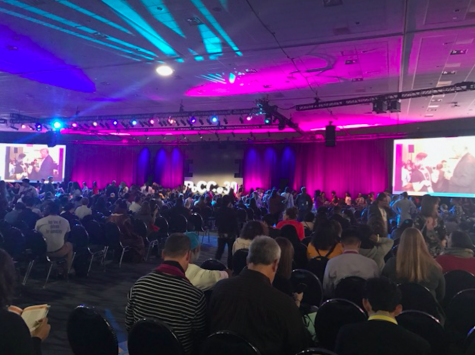
Teenagers and adults gather for the opening ceremony of the SDLC and PoCC. The two conferences ran concurrently.
Students also gained valuable insight from an array of keynote speakers. NAIS launched the conference on Thursday as keynote speaker Kimberlé Crenshaw delivered a speech to the combined audiences of the POCC and the SDLC. Crenshaw, an American civil rights lawyer and advocate and a professor at both the University of California at Los Angeles (UCLA) and Columbia University, discussed the pattern of intersectionality–a term that Crenshaw coined in 1989–pertaining to gender and race.
On Friday morning, activist DeRay Mckesson delivered a speech delineating the “tools” that students could use to create dialogue and promote social justice within their respective communities. Author, journalist and MacArthur Genius Grant Fellowship recipient Ta–Nehisi Coates addressed attendees during Saturday’s closing ceremonies by engaging in a moderated discussion focusing on his New York Times bestselling book “Between the World and Me.”
The conference featured opportunities for students to address issues and affirm their identities in open-mic sessions and express themselves during mealtime talent shows.
Although the SDLC took place over a span of just two and a half days, attendees developed bonds with fellow high school students from across the country. Many students took advantage of social media platforms such as Instagram and Snapchat to keep in touch with the activists and allies they met at the conference.
Students came back from the conference with lifelong connections but also with a commitment to continuing the conversation beyond Anaheim by creating change on campus.
“SDLC is a great opportunity [to gain] exposure and training because our students come together to talk about what their schools are doing and not doing,” Agüero-Esparza said.
Next year’s SDLC will take place in Nashville, Tennessee from Nov. 28 to Dec. 1. Applications for upper school students are open to all and will be sent out by the diversity committee in spring.


















![“[Building nerf blasters] became this outlet of creativity for me that hasn't been matched by anything else. The process [of] making a build complete to your desire is such a painstakingly difficult process, but I've had to learn from [the skills needed from] soldering to proper painting. There's so many different options for everything, if you think about it, it exists. The best part is [that] if it doesn't exist, you can build it yourself," Ishaan Parate said.](https://harkeraquila.com/wp-content/uploads/2022/08/DSC_8149-900x604.jpg)




![“When I came into high school, I was ready to be a follower. But DECA was a game changer for me. It helped me overcome my fear of public speaking, and it's played such a major role in who I've become today. To be able to successfully lead a chapter of 150 students, an officer team and be one of the upperclassmen I once really admired is something I'm [really] proud of,” Anvitha Tummala ('21) said.](https://harkeraquila.com/wp-content/uploads/2021/07/Screen-Shot-2021-07-25-at-9.50.05-AM-900x594.png)







![“I think getting up in the morning and having a sense of purpose [is exciting]. I think without a certain amount of drive, life is kind of obsolete and mundane, and I think having that every single day is what makes each day unique and kind of makes life exciting,” Neymika Jain (12) said.](https://harkeraquila.com/wp-content/uploads/2017/06/Screen-Shot-2017-06-03-at-4.54.16-PM.png)








![“My slogan is ‘slow feet, don’t eat, and I’m hungry.’ You need to run fast to get where you are–you aren't going to get those championships if you aren't fast,” Angel Cervantes (12) said. “I want to do well in school on my tests and in track and win championships for my team. I live by that, [and] I can do that anywhere: in the classroom or on the field.”](https://harkeraquila.com/wp-content/uploads/2018/06/DSC5146-900x601.jpg)
![“[Volleyball has] taught me how to fall correctly, and another thing it taught is that you don’t have to be the best at something to be good at it. If you just hit the ball in a smart way, then it still scores points and you’re good at it. You could be a background player and still make a much bigger impact on the team than you would think,” Anya Gert (’20) said.](https://harkeraquila.com/wp-content/uploads/2020/06/AnnaGert_JinTuan_HoHPhotoEdited-600x900.jpeg)

![“I'm not nearly there yet, but [my confidence has] definitely been getting better since I was pretty shy and timid coming into Harker my freshman year. I know that there's a lot of people that are really confident in what they do, and I really admire them. Everyone's so driven and that has really pushed me to kind of try to find my own place in high school and be more confident,” Alyssa Huang (’20) said.](https://harkeraquila.com/wp-content/uploads/2020/06/AlyssaHuang_EmilyChen_HoHPhoto-900x749.jpeg)



